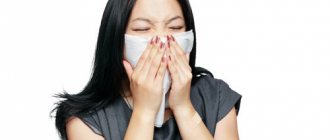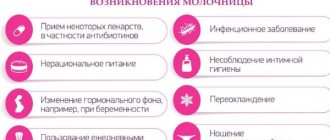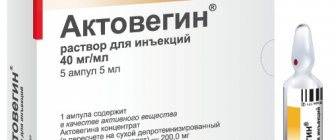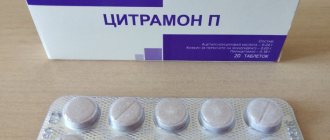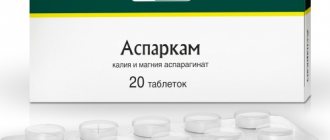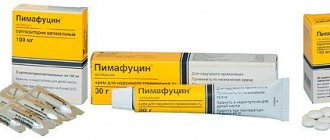Medicines for the bladder come in several types, each of which performs its own function and fights the disease (this could be cystitis, infectious pathologies). The use of medications is the foundation of any therapy.
Medicines for the bladder come in several types, each of which performs its own function and fights the disease (this could be cystitis, infectious pathologies).
The danger of untimely treatment
Sometimes advanced pathology becomes dangerous for neighboring organs. If left untreated, the infection quickly attacks the urethra and kidneys, which contributes to the development of urethritis and pyelonephritis. The consequences of interstitial cystitis are more insidious. It is expressed in inflammation that affects all the mucous and muscular walls of the bladder, which shrinks and no longer fulfills its physiological function.
This stage of the disease is practically incurable, so the urinary organ is removed and plastic surgery is made from parts of the intestine.
Cervical cystitis affects the transition from the bladder neck to the urethra, involving the internal and external sphincters. The muscles responsible for opening and closing urination become weakened, causing urinary incontinence. This symptom causes discomfort to the patient and may remain even after untimely therapy.
The chronic nature of the disease can also manifest itself during pregnancy, since during this period the hormonal background of the woman’s body changes. This creates difficulties not only for the mother, but also negatively affects the development of the fetus. The outcome may be miscarriage, premature birth, or the newborn baby is low in weight.
Herbal remedies
This category of drugs is quite widely used in the complex therapy of cystitis. Most often they are prescribed in conjunction with antibiotics and anti-inflammatory drugs. Herbal medicines can be produced in the form of herbal preparations, tablets, and tinctures. Herbal medicines have a beneficial effect on the condition of the bladder:
- preparations based on medicinal herbs are good antiseptics, they successfully fight pathogenic microorganisms;
- act as diuretics, helping to remove infection from the body of a sick person;
- relieve manifestations of the inflammatory process;
- have antispasmodic and analgesic effects.
In most cases, herbal remedies that include medicinal herbs can be prescribed in situations where there are no complications, the painful syndrome is mild, and there is no fever. These are drugs such as Cyston, Monurel, Canephron.
A positive result, which will have a beneficial effect on the condition of the bladder, will not be long in coming. Taking medicinal decoctions can increase the daily volume of urine excreted, and will also have an anti-inflammatory effect on the affected organ.
Principles of drug therapy
Inflammation of the bladder requires the use of effective therapeutic agents. On the pharmaceutical market, the list of medications for cystitis in women is growing every day. Although pharmacies are equipped with a wide range of medications, it is not recommended to select them yourself.
Only a doctor can find out the cause and degree of development of the disease, the nature of its course (separately or in combination with other pathologies). This information helps to successfully fight the disease.
Cefixime
Cefixime (Suprax, Pancef) has a wide spectrum of antimicrobial activity, low toxicity and high compatibility with other antibacterial drugs. It does not cause disorders of embryonic development and hereditary changes, therefore it can be used to treat children and pregnant women at any stage.
The highest concentration in the blood occurs 3-4 hours after taking the drug. Its bioavailability is 50%. Over the course of 2 days, 50-55% of the taken dose of Cefixime is gradually excreted in the urine. About 10% of the substance is excreted with bile.
The medicine quickly relieves the unpleasant symptoms of the disease. When diagnosing a mild form of cystitis, taking one tablet is sufficient to obtain a lasting therapeutic effect. If the signs of cystitis have not disappeared, you must re-take the drug after 1-2 days.
A contraindication to the use of Cefixime is individual intolerance to the active substance or other components of the drug, as well as sensitivity to cephalosporins and penicillins. It is not recommended to prescribe the drug to children with renal failure.
As adverse reactions, bleeding disorders, nausea, diarrhea, headaches, dizziness, itching and allergic rashes may sometimes occur.
Calcium secretion blockers inhibit the process of removing drugs from the body. In this case, an overdose may develop. It is possible even with a single use of Cefixime. An overdose is manifested by an increase in the severity and frequency of adverse reactions.
Variety of forms used
Experts approach the prescription of medications for cystitis competently. During a conversation with the patient, it becomes clear whether there are any concomitant diseases, what kind of lifestyle he leads, and how severe the symptoms are.
These factors will influence the choice of dosage form, among which are the following:
- Pills.
- Capsules.
- Dragee.
- Powders.
- Drops inside.
- Paste for oral use.
- Solutions for intravenous administration.
- Ampoules.
- Vaginal suppositories.
The listed factory products are used both individually and in combination, much depends on the severity of the pathology.
Each type of drug has its own advantages, but more often the choice of specialists leans towards tablet drugs.
Types of therapeutic effects of drugs
According to the mechanism of influence on the pathological process, in medicine it is customary to distinguish 2 types of therapy:
- Etiological - direct destruction of the causative microorganism or the creation of conditions that make its life and division process impossible. Drugs in this group include antibiotics, antifungals and antivirals. Types of etiological treatment depend on the susceptibility of the pathogen to the drug.
- Pathogenetic - elimination of inflammation and its consequences. This can include drugs from all other groups that affect the reduction of swelling, muscle spasms, vascular permeability, and local immunity.
A special type of therapy is the restoration of hormonal balance in menopausal women. It has been established that it is the decrease in estrogen synthesis that affects the occurrence of cystitis. Therefore, vaginal suppositories with estrogen and ointments are used in treatment in consultation with the gynecologist.
In the treatment of cystitis, all areas of therapy are important.
Advantages and disadvantages of tablets
This form of medicine occupies one of the leading places in sales in the assortment of pharmacies. Often patients, doctors and pharmacists give preference to tablets when choosing.
Popularity has been gained by a number of advantages:
- Accuracy of dosing of active ingredients.
- Duration of action.
- Long-term storage.
- High performance and hygiene.
- Convenient for storage, transportation and vacation.
- Masking of unpleasant taste and smell (due to the application of a coating).
- Consistent absorption into the gastrointestinal tract from a multicomponent composition.
- Prolonged action (based on substances that dissolve in portions).
These advantages provide convenience and ease of use of tablet medications.
But they also have disadvantages:
- Inability to administer due to vomiting or fainting.
- Difficulty in swallowing freely for some patients and children.
- It may contain substances that irritate the gastrointestinal mucosa.
- The pharmacological effect develops more slowly than others.
- Chemical change in constituent components during long-term storage.
In pharmaceuticals, tablets for cystitis in women are classified into several pharmacological groups and are used to get quick treatment and relief.
Nevigramon against bladder inflammation
In terms of its effects, this drug is similar to Nitroxoline, but has a very high cost. It is used in all cases of cystitis, but only if its source is bacteria. Usually well tolerated by patients. In some cases, it can provoke acute intestinal disorders and itchy skin.
The drug Nevigramon
Nevigramon can be taken in two ways. With the first treatment option, you first need to drink 1 g of the active ingredient 4 times a day. The best effect will be achieved when taking the medication an hour before meals. After 7 days of treatment, the patient is transferred to gentle therapy, which involves taking 500 mg of Nevigramon 4 times a day, also for a week. For mild cases of the disease, you need to take 1 g of tablets for one week, also 4 times a day.
Attention! This antibacterial drug should not be taken during the first 12 weeks of pregnancy. After this period, a dosage of 500 mg of the active substance is usually prescribed, which must be taken 4 times during pregnancy, an hour before meals.
Tablet forms to combat cystitis
To make the right choice of medication for a urinary tract infection, you need to visit a urologist. He studies the degree of neglect, takes into account the individual characteristics of the patient, prescribing effective remedies.
In exceptional cases (when there is no opportunity to see a doctor in person), the patient has to independently select medications to cure the disease. For some, careful study of the instructions, possible contraindications and side effects of medicinal substances helps with this. It can be helpful to look for reviews from people who have taken them.
Main groups of drugs
The disease is usually diagnosed in the presence of infection, accompanied by pain, cramping in the lower abdomen, and sometimes there is blood in the urine. The development of the disease can be provoked by concomitant pathology. These symptoms require complex treatment, therefore the following pharmacological groups of drugs have become in demand in urological practice:
- Analgesics.
- Antispasmodics.
- Non-steroidal anti-inflammatory drugs.
- Sulfanilamide and nitrofuran series agents (antimicrobial).
- Diuretics.
- Immunostimulants.
- Antibacterial.
- Probiotics.
Herbal remedies
Herbal medicine is one of the popular methods of traditional medicine. Preparations obtained from herbal raw materials reduce inflammation and pain, have an antiseptic and diuretic effect, and increase local immunity. Acute and chronic cystitis in women needs to be treated comprehensively, so herbal medicines are suitable as an auxiliary and preventive component to solve the problem.
Among them, the following are widely used: “Fitolysin” paste, “Urolesan”, “Cyston”, “Canephron N” (“Bionorica”), available in dragees, syrup and drops. All of them are factory-made and sold without a prescription.
Thanks to herbal components, inflammation of the bladder is combated, and subsequent relapses are prevented if the pathology is chronic.
The advantage of such drugs is the absence of negative effects on the digestive system and intestines; the drugs work without causing disturbances in the functions of the gastrointestinal tract.
When using herbal remedies, you need to drink enough liquid. Water, kidney herbal teas, berry fruit drinks made from lingonberries and cranberries enhance the diuretic effect, which is necessary to flush out the infection from the bladder. This prevents the introduction of microbes into the kidneys.
Representatives of pharmacological groups
There are a number of medications classified into different groups. Their introduction into therapeutic measures gives good results in almost all cases of this disease.
A bacterial disease must be treated in combination with broad-spectrum antibiotics. The need for them has increased after studies have shown that untreated acute inflammatory process of the urinary tract often becomes chronic. But due to the significant list of side effects and contraindications, this group of drugs is not suitable for everyone. For a good prognosis, it is first necessary to determine the resistance of bacteria to antimicrobial agents.
Antispasmodics are prescribed to relieve pain during urination and relieve excess tension in the smooth muscles of the pelvic organs.
In the treatment of the urinary tract, antibacterial agents are used most often. The need for them is increasing due to their wide spectrum of action and their diversity in chemical structure. The following drugs are actively used in medicine:
| Subgroup | Representative | Description |
| Fluoroquinolones | "Nolitsin" | The drug fights inflammation well, but has a rather aggressive effect on the body, so it is not prescribed to children. "Nolitsin" is contraindicated during lactation. Advantage: affordable. |
| "Norbaktin" | It gives an effective result, so it is prescribed when other antimicrobial agents are ineffective. | |
| Hydroxyquinolones | "Nitroxoline" ("5-NOK") | The intensity of exposure is similar to fluoroquinolones. It tends to color urine bright yellow. The domestic representative is cheap compared to foreign ones. If there is an urgent need for its use, you need to stop breastfeeding. |
| Quinolones | "Palin" | Prescribed for ascending urinary tract infections. |
| Phosphonic acid derivatives | "Monural" ("Fosfomycin") | In men, it is used in combination with others in the treatment of prostatitis. It can be taken even during pregnancy with bacteriuria. |
| Nitrofuran derivatives | "Furagin" | Recommended for acute or mild forms of the disease. |
| "Furazolidone" | Microorganisms rarely develop resistance to it. | |
| "Furadonin" | Contraindicated for children under 10 years of age. |
When choosing certain medicinal substances, the urologist takes into account the identified pathogen and the general condition of the patient. The course of treatment and dose are also determined by the doctor. Antibiotics are available in pharmacies by prescription. If there is a need to replace a medicine with a more inexpensive analogue, coordination with a specialist is important.
Tablets for quick relief of symptoms
Sometimes the symptoms of the disease take you by surprise and are so painful that they require immediate help. For such cases, powerful drugs have been developed that can eliminate the main signs of the disease in just one go. The new generation antibiotic “Fosfomycin” can be used even before receiving the results of a urine test. A single oral dose is enough to get rid of the problem for a long time. But for the chronic form of the disease, the drug will not work.
"Nolitsin", which contains norfloxacin, is prescribed for infectious pathologies of the genital organs. It has been noticed that when using it, the symptoms go away quickly; it is recommended to drink it for 3 days.
In addition to the main medicinal substances, antispasmodic or anti-inflammatory drugs are added to reduce pain.
Nitroxoline for the development of cystitis in women
These tablets are also classified as antibiotics. Used to suppress many bacteriological genitourinary infections, including cystitis. Nitroxoline can also be used to treat cystitis caused by surgical interventions and the installation of a boat.
Nitroxoline is used to suppress many bacteriological genitourinary infections, as well as cystitis
To achieve the required effect, a woman is usually prescribed 100 g of the active substance 4 times a day. Treatment, taking into account additional symptoms and the patient’s medical history, can last up to 3 weeks, but not less than 10 days.
Attention! Nitroxoline, like most antibiotics, are universal remedies against cystitis. This means that they can be used by men and children if necessary. But it is important to accurately calculate the dose and number of doses.
Therapy for pregnant and lactating women
A chronic disease can appear in pregnant or lactating women and be asymptomatic, and during exacerbation the signs are pronounced. Therapy in such cases must be approached responsibly, because the consequences will affect the mother herself and the baby. Taking this into account, the doctor will select safe medications.
Monural is very popular. Its special feature is its compatibility with breast milk. Once in the baby's intestines during lactation, the medicinal substance is not absorbed, which makes it harmless.
Sometimes doctors allow the use of penicillin antibiotics during lactation. In such situations, it is important to monitor the condition of the skin of young children, as allergic reactions in mother and baby are possible. During pregnancy, it is preferable to prescribe this group of drugs for a minimum period, and supplement the treatment with medications that are safer for the body.
Bladder therapy in children should be started only after the degree of inflammation has been identified. Pediatricians allow children to use antispasmodics, uroseptics, and antibiotics. The most effective method of combating this disease in girls is to take oral medications: drops, tablets, suspensions. The attending physician establishes and controls the complex treatment regimen.
Pathogenetic drugs
To relieve spastic painful contractions of the bladder muscles, antispasmodics are indicated. They are available in both tablets and ampoules. Suitable for continuous use and assistance in cases of severe pain; in small dosages it can be used in the treatment of children. The most famous:
- No-spa - refers to isoquinoline derivatives, through the gradual blocking of a number of enzymes and calcium, it reduces spasm of smooth muscles.
- Papaverine - in addition to tablets and ampoules, its form is known in rectal suppositories; it acts on the transmission of nerve impulses to the muscles.
- Platyphylline is a cholinergic receptor blocker; as a result, muscle fibers do not “recognize” the mediator acetylcholine, which is necessary for contraction. Available only in ampoules. More applicable in emergency situations for spastic pain.
Analogues of No-shpa: Drotaverine, Drotaverine-forte.
Diuretics for inflammation of the bladder are recommended only of plant origin, since all synthetic drugs have an irritating effect on the mucous membrane. To enhance the “flushing” effect, the following are shown:
- herbal diuretics,
- bear ears,
- the above herbal remedies.
Consequences of taking antibiotics
To prevent the spread of infection, strong antibiotics must be taken, but the consequences of their use also negatively affect the body. Before prescribing such drugs, the person’s weight, age, chronic diseases and general condition are taken into account. The longer the course of treatment, the greater the effect. And this increases the risk of developing dysbiosis or allergies.
To prevent such consequences, probiotics are additionally prescribed to restore smooth intestinal function and antihistamines.
Often, after using antibacterial drugs, the microflora of the mucous membranes of the vagina and oral cavity suffers. This leads to the development of thrush. To combat pathogenic fungi, antimycotics are used, both topically in the form of vaginal suppositories, creams, and orally in capsules.
By its nature, an antibiotic destroys both pathogenic and beneficial microflora. The body's defenses are weakened, which becomes susceptible to infections. Therefore, you need to additionally consume immunomodulators or foods containing large amounts of vitamins and minerals.
Levofloxacin
Levofloxacin (Tavanic) is the levorotatory active isomer of ofloxacin. The antibacterial drug remains highly active against traditional pathogens of cystitis and has a detrimental effect on atypical microorganisms. It not only stops their reproduction, but also causes their mass death.
Levofloxacin is superior to other drugs in its antimicrobial activity. It causes spontaneous mutations in pathogenic microorganisms 100 times less often than other antibiotics. The development of drug resistance occurs in bacteria only after several mutations. Therefore, over the years of using Levofloxacin, the susceptibility of cystitis pathogens to it has not decreased and exceeds 90%.
The drug is well absorbed from the gastrointestinal tract. Its bioavailability exceeds 99%. After 1 - 1.5 hours, the maximum concentration of the active substance in the blood is observed. The concentration of Levofloxacin in tissues and body fluids exceeds the level of the drug in the blood. Activity against infectious agents persists throughout the day. About 90% of the drug is excreted in the urine after 2 days.
The long period of action and elimination, as well as the ability to achieve high concentrations in tissues and fluids, make it possible to take Levofloxacin for cystitis once. One tablet of the drug causes a lasting therapeutic effect in the majority (87%) of patients with a complicated form of cystitis.
Levofloxacin is considered one of the safest antibiotics.
However, it is not prescribed to pregnant and lactating women, in addition to children and adolescents. Contraindications are individual intolerance to drugs of the fluoroquinol group, epilepsy and renal failure.
Adverse reactions during treatment with Levofloxacin occur rarely. Sometimes diarrhea or nausea occurs. The bioavailability of the drug is reduced when taken simultaneously with medications containing iron salts.
In what cases are tablets replaced with other forms?
Tablet medications are quite effective. Their appointment is practiced if the patient’s intoxication and intensity of the disease are not pronounced, the temperature is within normal limits, and the general condition is satisfactory. And the cost of the tablets is affordable for the majority of the population. Some drugs tend to irritate the gastric mucosa, so patients with gastritis or ulcers should not use such drugs.
There are situations when a person needs a more intensive, fast-acting method of therapy, but his health does not allow him to swallow a pill. Then he is given intravenous injections or drips. The prescription of other medications is justified when the patient has severe, uncontrollable vomiting or is unconscious.
In other cases, injection drugs give way to the oral route of administration, which is less painful.
Inflammation of the urinary system is considered a common pathology. Timely and completed treatment gives a favorable prognosis. If acute symptoms are neglected, the disease can not only become chronic, but become irreversible. In very severe cases, this leads to the development of oncological processes.
Diuretics
For cystitis, herbal medicine is often prescribed as an auxiliary drug for the treatment of the disease. It helps to increase the amount of urine produced per day. However, it happens that such treatment tactics do not bring the desired effect. In this case, diuretics are prescribed, such as Lasix, Furosemide.
It should be remembered that diuretic tablets for the treatment of cystitis are prescribed only by a doctor, since there is a high probability of side effects on the cardiovascular system.
Probiotics to restore microflora
Normally, the human intestines and genitals are populated by microorganisms. There is a stable balance between beneficial bacteria and opportunistic ones. The latter are so called because they are not active in a healthy person, and when immunity is reduced they can cause disease.
The number of opportunistic bacteria and fungi increases with antibiotic treatment. They kill both the pathogen and the beneficial microflora, which inhibits the growth of harmful ones.
Therefore, drugs to restore the normal environment of the genitourinary tract and intestines are often used during treatment with antibacterial agents. These medications are called probiotics.
They contain beneficial microflora - lacto- and bifidobacteria (Baktisubtil, Linex, Bifiform) or a medium for their vital activity (Hilak). These medications are taken for about 10 days, 40 minutes before meals, in capsules or powders, soluble in water. There are no contraindications, sometimes there may be bloating, flatulence, and transient diarrhea.
Immunomodeling agents
In case of chronic and sluggish current, protracted inflammatory processes, therapy aimed at increasing immunity is used. It is represented by drugs of different origins. A plant extract from Echinacea purpurea, due to active substances of a polysaccharide nature, stimulates bone marrow hematopoiesis, increasing the number of granulocytes and the functionality of phagocytes. It also has an antiherpetic effect.
Methyluracil is a derivative of pyrimidine, a nitrogenous base of DNA, which stimulates the synthesis of red and white blood cells. Sodium nucleinate has the same effect. Additionally, it accelerates natural immunity factors: migration and cooperation of T- and B-lymphocytes, phagocytic activity of macrophages and nonspecific resistance. These drugs are taken for a long time, orally.

